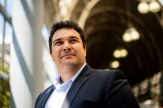How to tell if an N95 mask needs a snug adjustment
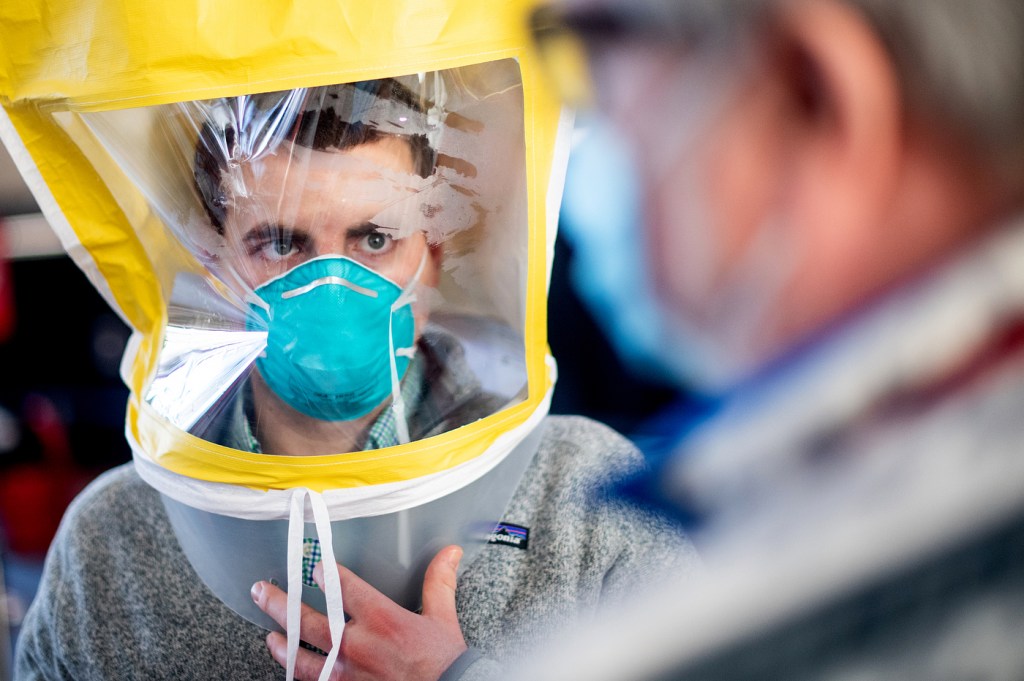
One mask or two? Medical baby blue or hot pink? Duckbill, perhaps?
Whatever your choice, masks remain one of the most effective measures to limit the spread of COVID-19, according to federal health authorities.
Yet for members of Northeastern’s medical community who work with symptomatic patients in the Huntington Testing Center on the Boston campus, the heavy duty N95 is the only mask for them. It blocks up to 95 percent of airborne particles, says Chris Bingel, the radiation safety manager in the university’s Office of Environmental Health and Safety.
“They create a tight seal around the mouth and nose, so they provide substantial protection,” he says. “They’re the workhorse mask of healthcare facilities” and are so effective that doubling up with another mask isn’t necessary, he adds.
Bingel is one of several employees who are specially trained to administer a test to Northeastern medical professionals to make sure the respirator is secure against the face. Like a motorcycle helmet or any other protective equipment, the mask is effective only if worn properly, he points out.
He walked News@Northeastern step by step through the examination using his colleague, biosafety specialist Alex DeSimone, as a model.
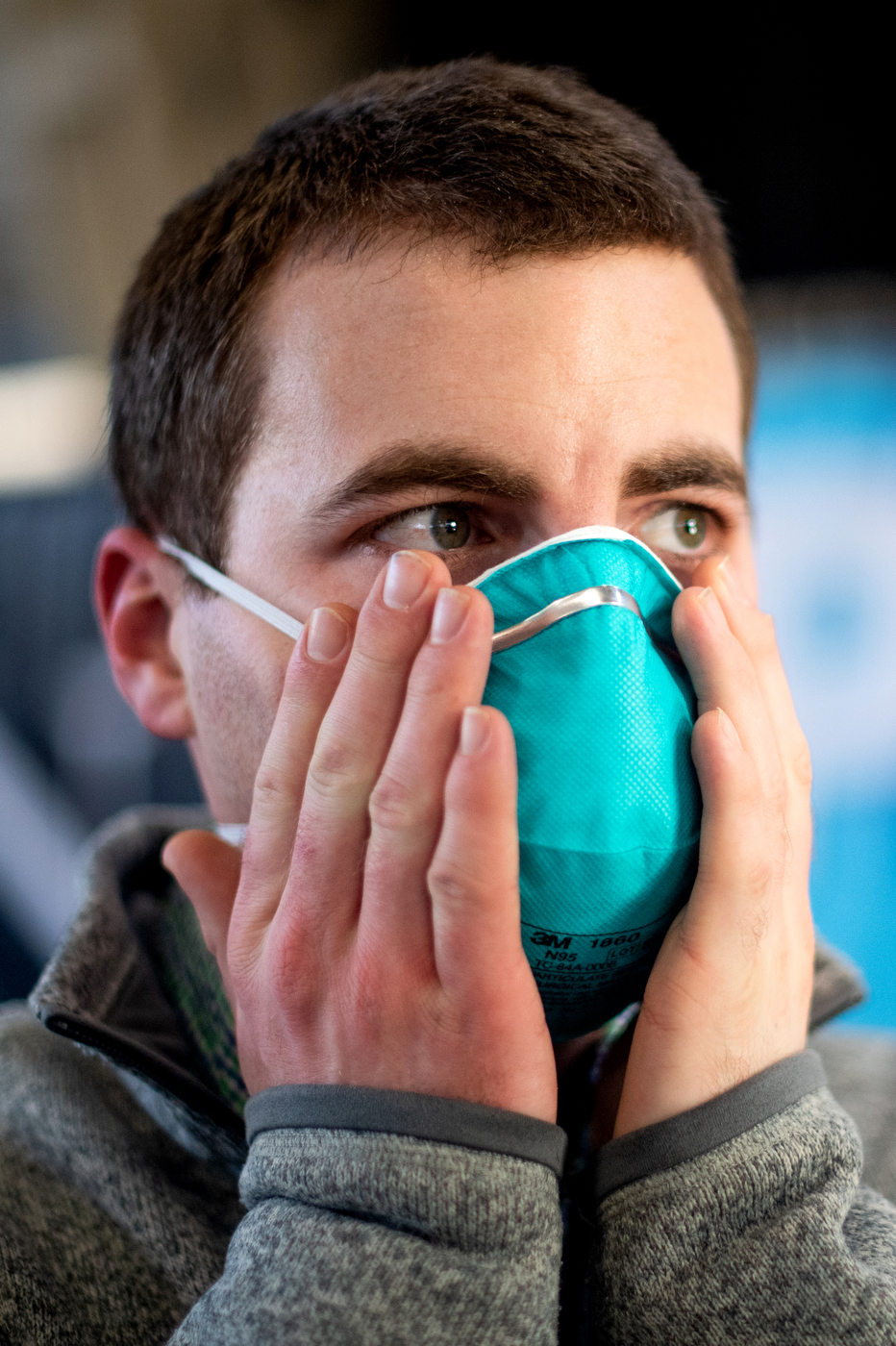
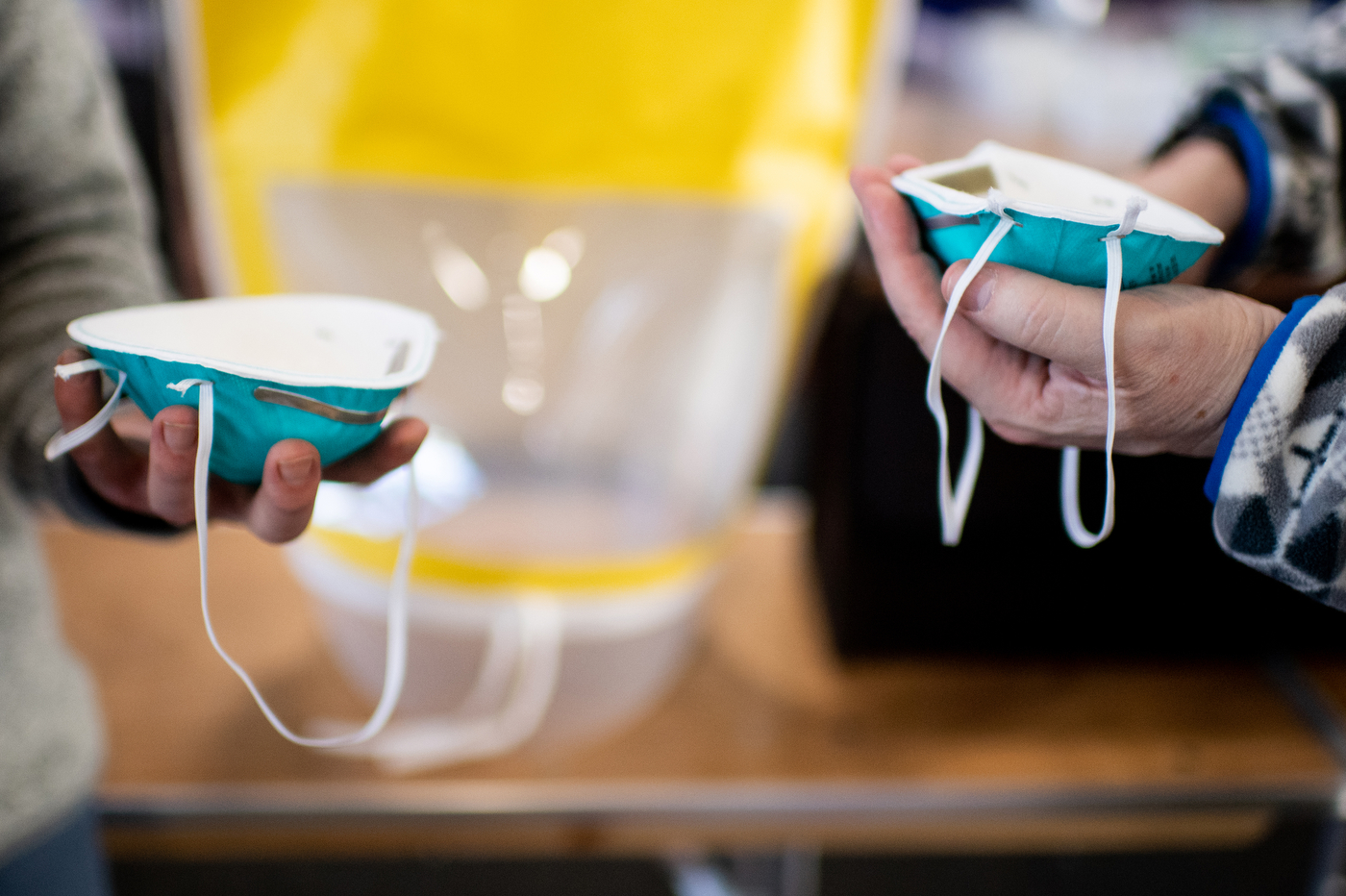
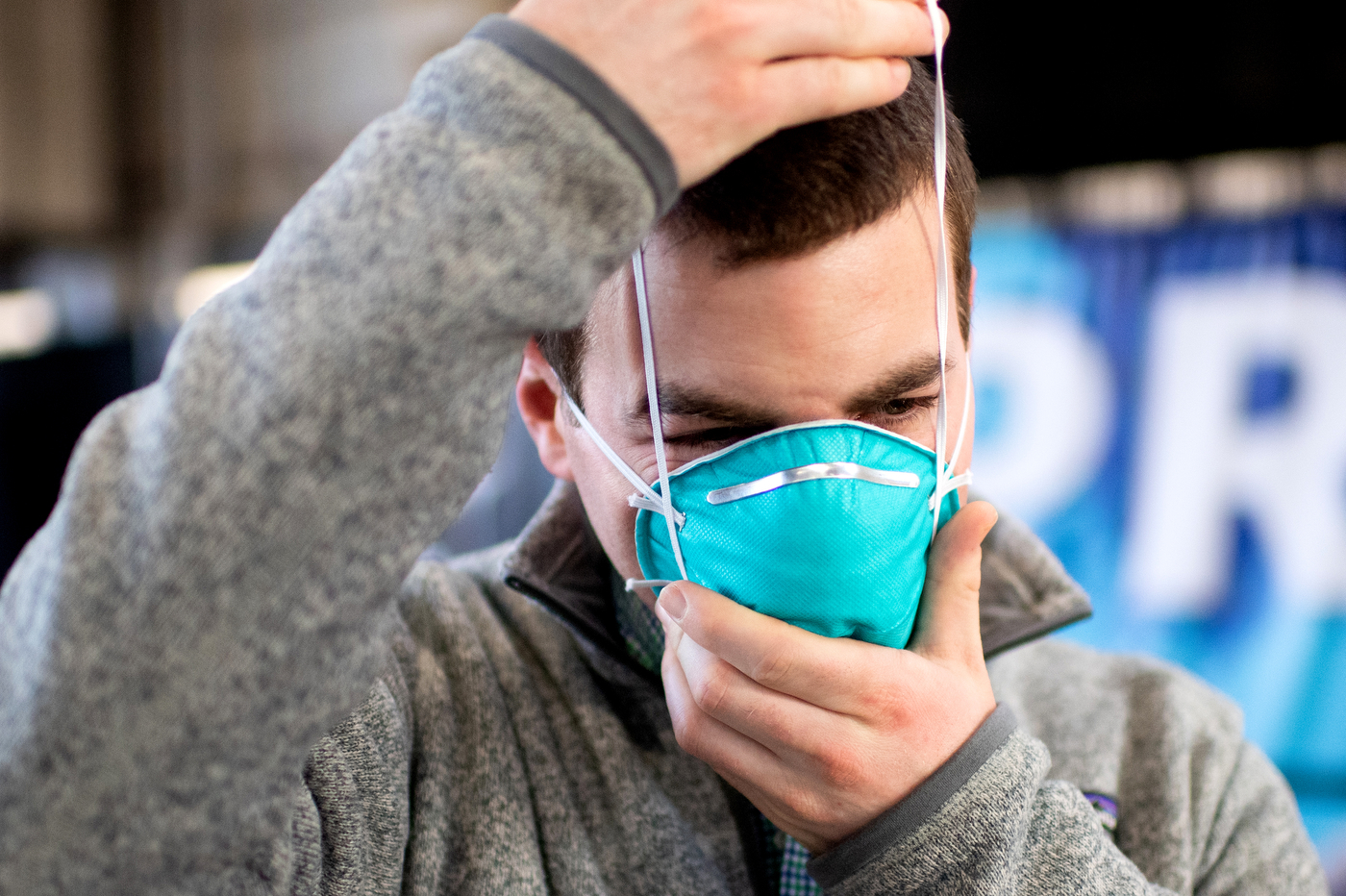
The fit test is actually a taste test involving a hood resembling something a beehive keeper might wear. A spray nebulizer is inserted in a small hole in the see-through portion of the hood near the mouth. A mist of sweet-tasting saccharin is released from the nebulizer while the hood prevents exterior tastes and smells from obscuring the examination.
More than 300 tests have been performed on nursing students and other healthcare workers since the summer, says Bingel.
The test generally lasts about 20 minutes and concludes once the saccharin is no longer detected.
Before that can begin, healthcare staff must fill out a questionnaire to determine if they have breathing issues such as asthma. Such issues raise concerns, but do not necessarily disqualify someone from using an N95.
The questionnaire is required of all medical staff, including nursing students from the Bouvé College of Health Sciences and the wellness team members in the familiar red shirts at Cabot Testing Center.
Students who may exhibit symptoms of the coronavirus are directed to an individual room in the Huntington facility with one of the medical professionals who performs a nasal swab. Though the sample collection method is the same, students do not swab their own noses the way they do at Cabot.
Medical staff wear an N95 and a face shield for the swab procedures that they will manage over the course of a shift, so it’s important to be able to breathe comfortably, Bingel says. In addition to the medical clearance, staff are required to take an online training course to make sure they know how to properly put on the N95. The fit test can then begin.
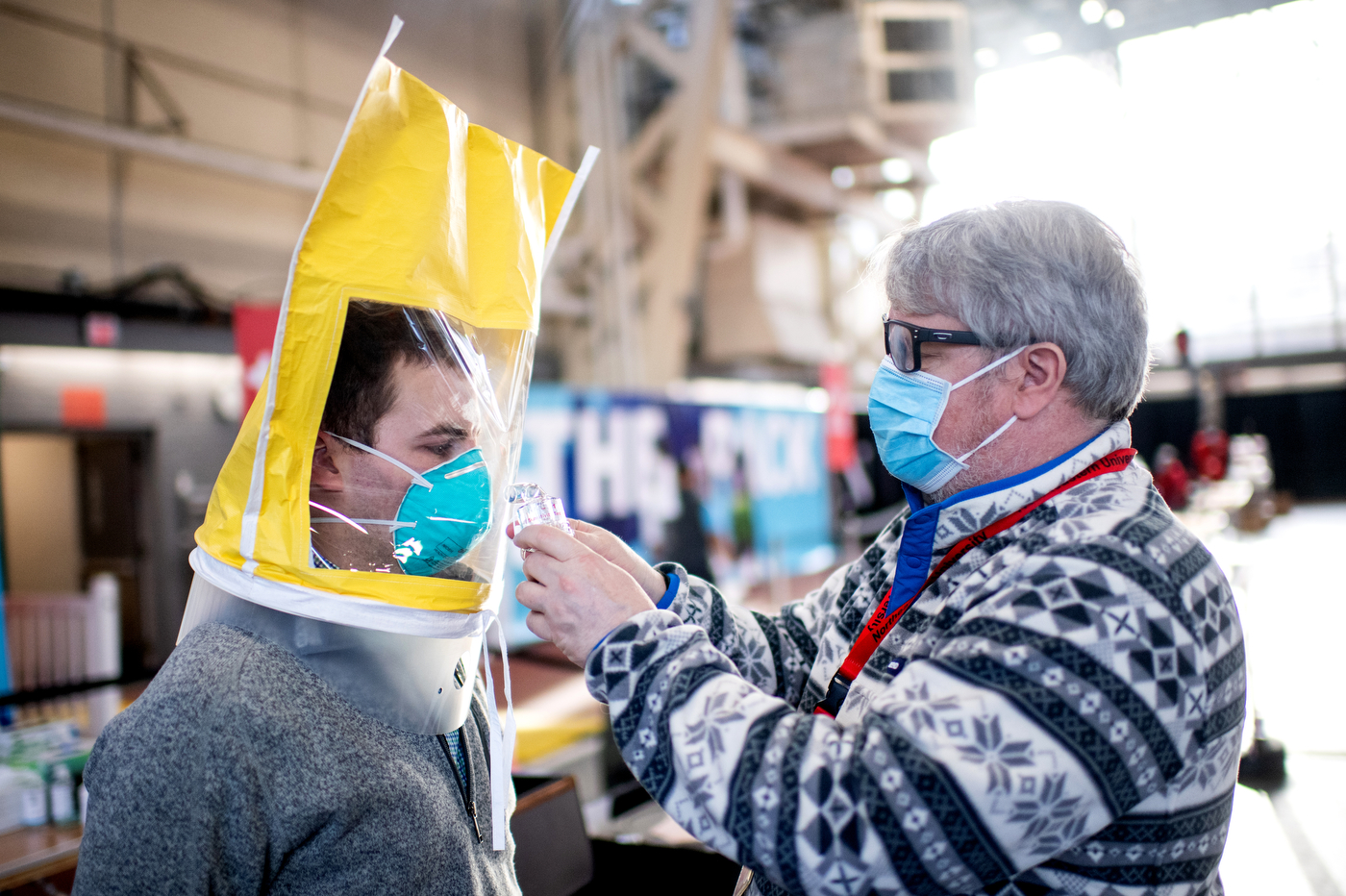
Facial hair prevents a tight seal, so men must be clean shaven. There have been several instances where employees were directed to a bathroom with a razor and shaving cream.
The mask is then cupped in one hand, held securely over the nose and mouth, while the other hand pulls the two elastic bands behind the head, one just above the tip of the ears and the other just below the hairline.
Adjust the metal strip across the bridge of the nose, but don’t pinch it, advises Bingel. Pinching “creates an opening so it’s not going to be a good seal,” he says. Instead, roll a finger along the strip until it conforms to the shape of the upper nose down to the cheek bones.
A series of bending and twisting motions make sure the seal remains snug while wearing the hood before the tasting portion of the examination ensues. Several blasts from the nebulizer determine if the saccharin is penetrating the respirator.
“It’s not like candy sweet,” describes Gino Blaisdell, who works in the Cabot and Huntington centers, “it’s like diet soda.”
Adjustments are made until there is no taste; then healthcare workers can begin their rounds.
As with most facial coverings, condensation can affect performance.
“If the N95 gets wet and heavy and breathing becomes labored, it means that that filter is no longer working, so take it off and get another one,” Bingel advises staff.
But availability remains an issue. N95s are in hot demand, and a black market has emerged. More than 11 million fakes have been seized by the U.S. government in recent weeks, according to news reports.
Bingel says Northeastern has a pool of trusted resources to purchase N95s approved by the National Institute of Occupational Safety and Health, part of the Centers for Disease Control and Prevention. “The gold standard,” he says.
Keeping the Northeastern community safe remains a priority, Bingel adds, even as coronavirus infections and deaths are on the decline around the country, and vaccinations increase. Mask-wearing and proper distancing will remain key drivers of that effort.
Whatever your mask style, get comfortable with them, because we may be wearing facial coverings well into 2022, predicts Anthony Fauci, President Biden’s chief medical adviser for COVID-19.
For media inquiries, please contact media@northeastern.edu.


